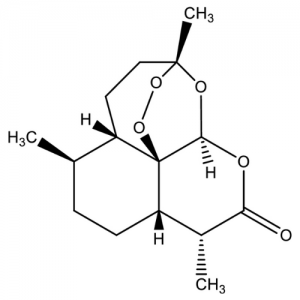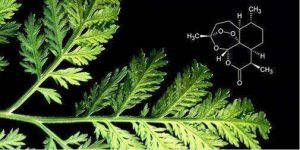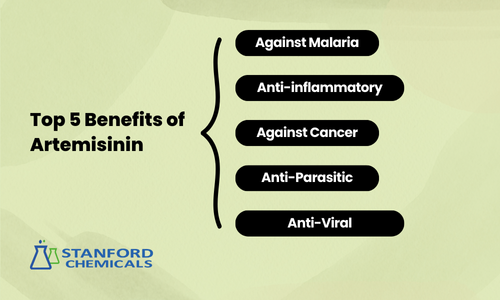What is Artemisinin? Comprehensive Insights and Information
Artemisinin is a naturally occurring compound that has revolutionized the treatment of malaria. Discovered in the early 1970s, it has become a cornerstone in the fight against this deadly disease.
What Is Artemisinin
Artemisinin is a sesquiterpene lactone derived from the sweet wormwood plant, scientifically known as Artemisia annua. It has a unique chemical structure, characterized by a peroxide bridge, which is crucial for its biological activity. This compound is renowned for its potent anti-malarial properties and has been extensively studied for its efficacy and safety.
Fig 1. Artemisinin chemical structure
When Was It Discovered
Artemisinin was discovered in the early 1970s by Chinese scientist Tu Youyou. Her discovery was part of a secret military project, known as Project 523, which aimed to find new treatments for malaria. Inspired by ancient Chinese medicine, Tu Youyou and her team extracted the compound from the sweet wormwood plant. Their groundbreaking work earned Tu Youyou the Nobel Prize in Physiology or Medicine in 2015. It recognizes the profound impact of artemisinin on global health.
Breakthrough Treatment for Malaria
Artemisinin offers several significant benefits, particularly in the treatment of malaria.
Rapid Action Against Malaria
Artemisinin acts quickly to reduce the number of malaria parasites in the blood, providing rapid relief from the symptoms of the disease. This quick action is especially important in severe cases of malaria, where timely intervention can be lifesaving.
It works by targeting the malaria parasite, Plasmodium falciparum, during its life cycle in red blood cells. The unique peroxide bridge in artemisinin’s chemical structure is key to its mechanism of action:
- Interaction with Heme: When the malaria parasite invades red blood cells, it consumes hemoglobin and releases heme, a toxic byproduct. Artemisinin reacts with the heme, breaking its peroxide bridge and generating reactive oxygen species (ROS).
- Damage to Parasite Proteins and Membranes: The ROS generated by this reaction causes oxidative damage to the parasite’s proteins and cell membranes. This damage is lethal to the parasite, leading to its death.
- Inhibition of Parasite Growth: By killing the parasites in the red blood cells, artemisinin helps reduce the overall parasite burden in the body, alleviating the symptoms of malaria and preventing the disease from progressing.
Unique Advantages in Treating Malaria
- Effective Against Drug-Resistant Strains
One of the most critical benefits of artemisinin is its efficacy against drug-resistant strains of malaria. Over the years, many malaria strains have developed resistance to traditional anti-malarial drugs. Artemisinin and its derivatives remain effective where other medications fail.
- Low Toxicity
Artemisinin has a relatively low toxicity profile compared to many other anti-malarial drugs. This makes it suitable for use in a wide range of patients, including children and pregnant women, under appropriate medical supervision.
Despite its potent anti-malarial effects, artemisinin selectively targets the malaria parasite while having minimal impact on human cells. This selectivity reduces the likelihood of severe side effects and makes the drug safer for broader use.
- Broad-Spectrum Activity
Beyond malaria, artemisinin has shown potential in treating a range of other parasitic infections and even some viral infections. Its broad-spectrum activity is a testament to its versatile mechanism of action and robust efficacy.
The generation of reactive oxygen species (ROS) by artemisinin can damage various types of pathogens, including parasites and viruses. This broad mechanism allows it to be effective against a wide array of infectious agents.
Fig 2. Artemisia annua
Other Health Benefits
In addition to being effective against malaria, multiple clinical and research studies have found many other health benefits.
–Nature’s Anti-Inflammatory Solution
Artemisinin has notable anti-inflammatory properties. Studies show that it can inhibit the release of certain inflammatory mediators, thereby reducing inflammation. This suggests that artemisinin could be effective in treating inflammatory diseases such as arthritis and inflammatory bowel disease.
–Effective Against Cancer
In recent years, the anti-cancer potential of artemisinin and its derivatives has gained considerable attention. Research indicates that it can inhibit the growth and proliferation of cancer cells through various mechanisms, including inducing apoptosis (cell death), inhibiting angiogenesis (formation of new blood vessels), and enhancing the effects of radiotherapy and chemotherapy. Artemisinin has shown activity against several types of cancer, including leukemia, breast cancer, liver cancer, and lung cancer.
Read more: The Benefits of Artemisinin for Anti-Cancer
–Anti-Parasitic Effects
Beyond malaria parasites, artemisinin also shows inhibitory effects on various other parasites. For example, it has demonstrated efficacy against schistosomes and trypanosomes. This broad-spectrum anti-parasitic activity makes artemisinin a valuable potential treatment for various parasitic infections.
–Anti-Viral Potential
Research suggests that artemisinin possesses antiviral properties against certain viruses. Although the exact mechanisms are not fully understood, preliminary studies indicate that it may inhibit viral replication and boost the host’s immune response. This opens up new possibilities for artemisinin in the treatment of viral infections
Fig 3. Top 5 benefits of artemisinin
Why Is Artemisinin Used in Combination Therapy
While artemisinin is highly effective, it is typically used in combination with other anti-malarial drugs in a treatment approach known as Artemisinin-based Combination Therapy (ACT). There are several reasons for this:
- Preventing Resistance
Using artemisinin in combination with other drugs helps prevent the development of drug resistance. The other drugs in the combination can target different stages of the parasite’s life cycle or different biochemical pathways, making it harder for the parasite to develop resistance to all the drugs simultaneously.
- Enhanced Efficacy
Combination therapies are generally more effective than monotherapies. By combining drugs with different mechanisms of action, ACTs can achieve a higher cure rate and more rapidly clear the parasites from the bloodstream.
- Shortened Treatment Duration
ACTs often require a shorter treatment duration compared to monotherapy, which can improve patient compliance and reduce the risk of incomplete treatment courses that could contribute to resistance.
Can Artemisinin Cause Liver Damage
Concerns about potential liver damage from artemisinin have been raised, particularly because the liver is a key organ for drug metabolism. However, clinical studies have shown that it is generally safe for the liver when used at recommended doses.
While artemisinin is usually well-tolerated, it is important to monitor liver function in patients undergoing treatment, especially those with pre-existing liver conditions. Regular liver function tests can help detect any signs of hepatotoxicity early, allowing for prompt intervention if needed.
Healthcare providers follow established guidelines to ensure the safe use of artemisinin, including proper dosing and duration of therapy. By adhering to these guidelines, the risk of liver damage is minimized.
Can Artemisinin Cause Side Effects
Like all medications, artemisinin can cause side effects, although they are generally mild and transient. The most common side effects include:
- Gastrointestinal Symptoms
Some patients may experience gastrointestinal symptoms such as nausea, vomiting, and diarrhea. These symptoms are usually mild and resolve on their own without the need for discontinuation of the drug.
- Dizziness and Headache
Dizziness and headache are also relatively common but typically mild and short-lived. Ensuring adequate hydration and rest can help manage these symptoms.
- Allergic Reactions
Allergic reactions to artemisinin are rare but can occur. Symptoms of an allergic reaction may include rash, itching, swelling, and difficulty breathing. If any signs of an allergic reaction appear, it is crucial to seek medical attention immediately.
- Transient Hematological Changes
In some cases, artemisinin may cause transient changes in blood cell counts, such as a decrease in white blood cells or platelets. These changes are usually temporary and return to normal after the treatment is completed.
- Neurotoxicity Concerns
There have been some reports of neurotoxic effects, particularly with high doses or prolonged use of artemisinin derivatives. These effects can include tremors, ataxia, and hearing loss. However, these side effects are rare and typically associated with doses much higher than those used in standard malaria treatment.
Stanford Chemical Company (SCC) is an excellent supplier of sodium hyaluronate powder and herbal extracts. We offer our customers high-quality artemisinin raw materials, hyaluronic acid of varying molecular weights and viscoelasticity, and other herbal extracts with health benefits. For more information on these materials, please visit our home page.
Conclusion
Artemisinin is a remarkable compound that has transformed the treatment of malaria, offering rapid and effective relief from this life-threatening disease. Discovered by Tu Youyou in the 1970s, it has saved millions of lives and continues to be a critical tool in the global fight against malaria.
Its benefits, including rapid action, effectiveness against drug-resistant strains, and low toxicity, make it an invaluable medication. However, its use in combination therapy is essential to prevent resistance and enhance efficacy. While generally safe, it is important to be aware of potential side effects and monitor liver function during treatment.
As research continues, artemisinin may also find applications beyond malaria, potentially offering benefits in treating other diseases. This extraordinary compound exemplifies the power of natural products in modern medicine, bridging traditional knowledge and contemporary science to improve global health.



